- Home
- Blake Pierce
Face of Fear Page 12
Face of Fear Read online
Page 12
Like a fog that had dissipated in the sunlight, the 23 enigma had lifted entirely from her view. Shelley had been right, of course. The whole thing had been nothing more than a wild goose chase, her own brain chasing itself in circles. Not only was she wrong in thinking that she had tracked down the killer, but even if she had been right, she would have needed a lot more evidence than she’d had.
Zoe showered dressed quickly, preparing herself for the day ahead with a minimum of fuss. She dried off her short-cropped hair and barely paused to check her appearance. It did not matter how she looked. It mattered that she got the case solved—and that was exactly what she was going to do today.
***
Zoe rolled up her sleeves, a symbolic gesture as well as a practical one. She was not going to be beaten by this case, not today. There was something here, and they would find it. She was not allowing herself another option.
“Does anything stand out?” she asked. She had, so far, been leading her own self down the garden path with her number theories. Asking Shelley’s opinion seemed like a more reliable way to begin.
“I don’t know,” Shelley admitted, sighing. “I’ve been thinking about it all night, too. It feels like there might be something with this drug connection. Even though Naomi Karling doesn’t yet fit the picture, she might be linked in some way. She could have been working secretly as a dealer, or dating a member of the gang like Callie was.”
Zoe nodded, then shook her head. “It makes sense, and it also does not. We thought we had our man with Cesar Diaz. He was the glue that made that theory stick. Without him, where do we go?”
“We could consider another member of the gang, acting on his behalf. Or maybe even someone who was affiliated with Clay Jackson. A grudge that wasn’t settled with his death.”
“We would need a concrete link with Naomi Karling.” Zoe lifted up the reports from the LAPD officers who had been speaking to her friends and family. “By all accounts, she was a good girl. A student who worked full-time to save up for college before she could start studying. She had a serious future ahead of her.”
“She was desperate for money. People in her situation are more likely to end up doing something illegal to get by,” Shelley pointed out.
Zoe rubbed her eyes. “I agree that it is possible,” she admitted. “We just do not have the evidence to back up the theory.”
“We could ask Captain Warburton to bring up a list of potential affiliates to both Jackson’s and Diaz’s gangs. Start working to eliminate them one by one from the suspect pool by way of alibi.”
Zoe nodded. “Ask him. But I do not feel that we should focus all of our time on this. The local cops can work on that. We should be looking for something more concrete.”
Shelley picked up the phone and dialed the internal number for Captain Warburton, engaging in a brief conversation with him to make their request. Zoe tuned her out, trying to focus.
The images of the tattoos were still calling to her. She had printed out everything that she could find, considered them from every angle. Still, there was nothing there. Idly, while Shelley talked, she opened her phone and started scrolling through John Dowling’s feed again, trying to see if there was anything that she had missed. It wouldn’t hurt to refamiliarize herself with the names of commenters and likers on his account, so that she would spot them right away if they also appeared on Captain Warburton’s list.
“What else?” Shelley asked, the phone now back in its cradle as she reapplied her attention to the case files.
“It could still be something to do with a common location,” Zoe said. “As in the case of Bar 23 West, it is more than possible that all three went to the same place, maybe even at the same time. A party, or a sports event, or something where a lot of people gather together. Maybe they even saw one another. It is not as though we can ask them.”
“But that’s the problem, isn’t it?” Shelley sighed. “We can’t ask them. We would never know.”
Zoe nodded. “Unfortunately, it is true. Unless someone were to come forward and say that they had been with all three victims at this hypothetical event, we would not know. Even then, it would be tenuous.”
They both looked over the files in front of them in silence for a short while, processing. There had been no hint of scandal in Naomi Karling’s life so far, not even so much as a jealous ex-boyfriend. Although there were potential candidates who might have wanted harm to come to either Callie Everard or John Dowling, it was harder to see someone who would attack all three of them.
“What if Naomi Karling is a red herring?” Shelley said. “She’s the only one who wasn’t burned. We’re assuming the killer stopped because he was interrupted, but it might be that he was never planning to burn her at all. It might be a completely unrelated killing, maybe a burglary gone wrong.”
Zoe covered her face with her hands and groaned. “I hope you are wrong,” she said. “If you are, then we have a lot more work to do. It is likely that we will not be able to make a breakthrough until he kills again.”
Shelley hummed in sympathetic agreement, turning over pages in the files she had spread in front of her.
Another silent pause was broken by a groan from Shelley, who closed Naomi’s file with an impatient slap of paper against the table. “I don’t know where to go on this one, Z,” she said. “All the statements, everything everyone has given us. All we know is that we’re looking for a white man of around six feet tall with dark, short hair. We still don’t even know his motive.”
Zoe knew that, as the senior agent, she ought to be able to give some reassurance. To give a direction to their case. But she had nothing.
“All we can do is keep looking,” she said, resuming her slow scroll down John Dowling’s page. “Retracing the same ground. I am still looking into the tattoos, although I know you doubt their relevance. Maybe something new will come up.”
Shelley shrugged, then reached for the pile of printed images that Zoe had been poring over the night before. “I guess I might as well join you,” she said.
Zoe chose one of the images she had seen before, clicking on John’s tattoo to bring it up larger on her screen, looking at the tiger. What did it really mean? Anything at all? Was she just dragging the investigation even further in the wrong direction? But what other direction did she have to go in?
Last night’s printing spree had been a case of dashing between images, printing them and then finding the next; Zoe had not taken the time to properly examine the actual posts themselves. On this one, she now saw, John Dowling had tagged his tattoo artist. She clicked through to the man’s page, interested in seeing if he had more images of the tiger that she had not yet seen.
It took a lot of scrolling. The artist was prolific, often posting up new pieces more than once a day. He included progress shots of larger artworks, tattoos that would take more than one session to complete, as well as his own sketches and designs. But eventually, she was rewarded by an image taken when the tiger was fresh and new, the skin still slightly red around it.
Zoe zoomed in on the image and winced, thinking for the umpteenth time in this case that she would never want to subject herself to something so painful and lasting on a whim. She scrolled across to the next image, which was a shot of the tattoo in progress—heavy black shading at the top, down to only an outline at the bottom of the design.
Then she leaned forward, putting the cell screen so close to her eyes that she almost bumped her nose into it, trying to see if she was seeing something correctly.
“Shelley,” she said, her voice coming out strangely pitched as she attempted to sound casual. “Tell me what you see in this image.”
Shelley took the cell out of her hand, examining it with a frown. “This is John Dowling’s tiger tattoo. It looks like this was taken when it was freshly done.”
“Not the tiger. Underneath it.”
Shelley moved the cell closer to her face, squinted, moved it away again. “It looks like… maybe… a series
of numbers?”
Zoe snatched the device back, reexamining the picture herself. “That is what I thought. A sequence of five numbers. I cannot make it out.”
“Are there any other angles?”
Zoe swiped down the tattoo artist’s page, trying to see if they had any other shots of John’s biceps. “I cannot see anything,” she said. The tattoo was in an awkward place—on the inner part of his upper arm, an area that was not commonly photographed. Not only that, but it was now covered by the tail of the tiger, shaded in over the numbers.
In all of the shots she had seen of John since he got the tiger tattoo, she had noticed that he was prone to angling his biceps toward the camera, showing off the design. By consequence, this serial number behind the tail—if that was what it was—would have been hidden. If it was only a new habit, and not the way he had always held himself, then there was a chance—a small chance—that they might be able to find a shot of it from the past.
“I’ll check his other accounts,” Shelley said.
Zoe nodded and went back to scrolling down John’s feed. She had to get back into the past—farther back than she had been last night—to a time before he had the tiger put onto his arm. To a time when he raised his arms for the photograph, or the angle was just so…
And then she found it.
“Here!” she said, putting her cell into the middle of the table. They could both see it clearly now. A young John Dowling, wearing a muscle vest with his arms above his head as he leaned on the frame of a door. They could see it.
A six-digit serial code, tattooed in sequence: 159225.
Six digits…
“It does not match,” Zoe said. “The serial number on Callie Everard was five digits. Until now, I assumed that the stripes on the tiger matched it with five areas of stripes, and Naomi’s vine tattoo had five flowers. But this is six.”
“So, we’re looking for something that could be represented either by five or six numbers,” Shelley said. “That should narrow it down quite a lot, shouldn’t it?”
Zoe was baffled. “Codes or serial numbers normally follow a precise pattern. The number of digits is set, and for a reason. The identification process would be much harder if you did not know how many digits to look for.”
“Say that again,” Shelley said, an odd look on her face.
“… The identification process would be much harder if—”
“That’s it!” Shelley’s hands shot to her mouth, then dropped again as she spoke more rapidly. “That’s it, Zoe. They’re identification numbers. You’ve hit the nail on the head!”
“What are you talking about?” she asked, but even as she did so, it was beginning to hit her. Identification numbers, tattooed onto humans. Particularly on their arms. Why had she not seen it before? It was so obvious…
“Holocaust identification numbers,” Shelley said. “The Nazis tattooed their prisoner identification numbers onto their bodies, because after they were killed their clothes would be removed. It was the only way they could keep a proper track of those who were registered prisoners.”
“But these people are young,” Zoe said. “John Dowling is the oldest, and he is not out of his thirties. It would be absurd to suggest that they were prisoners during the Holocaust.”
“Unless they were time-travelers,” Shelley said, a mischievous twinkle in her eyes. “But this is a trend right now. I’m so stupid for not recognizing it before, on Callie. People get the prisoner numbers of their grandparents, or other relatives, tattooed onto them as a mark of respect and solidarity. A memorial.”
Zoe couldn’t help but think the practice was a stupid one—engraving your body with something that had been, for many people, a mark of extreme suffering and cruelty. But then again, it had been proven multiple times that she was not in touch with the way most other humans thought. “So, both John Dowling and Callie Everard had close ancestors who were prisoners during the Holocaust.”
“It looks like we can assume that, but we’ll need to talk to their families and get confirmation. For Naomi Karling, too. I can’t see anything on her body that would resemble a serial number.”
“Me, either,” Zoe agreed. “And I have looked. Are we sure this is the right answer?”
“What else could it be?”
Zoe thought about it. “Zip codes. Landline numbers with the area code cut off. Something stupid from a game that young people are playing.”
Shelley suppressed a laugh at the last part. “So, let’s look into it.”
She moved to the computer they had been assigned and typed in a search term—number tattoos—to check the results. Zoe was immediately distracted by the images that popped up with examples—most of them dates, though dates wouldn’t make sense; they would have to contain the right kinds of digits, such as a 19 or a 20 before the last two, and even then they would normally be separated by dots or dashes. A date seemed unlikely. Unless John Dowling was commemorating something that would happen in the year 9225—or had happened in 1592. Either seemed implausible.
Shelley clicked on a list of “best number tattoo ideas ever” and started scrolling down the page. Most of the ideas posited in the article were easy to rule out. A set of coordinates would have required more numbers, not to mention letters indicating direction. Dates were another popular suggestion, but they had already been ruled out. Lucky numbers weren’t usually so long.
The image of a Fibonacci sequence in one of the examples made Zoe shudder, casting her mind back to their first big case: a killer who wanted to recreate the golden ratio, only with murders. The value of pi was an almost laughable idea—as if Zoe would not have recognized such a sequence immediately.
“Here,” Shelley said, reading aloud for both of their benefits. “The relatives of Holocaust survivors, particularly children or grandchildren, have been getting their prisoner numbers tattooed on themselves as a mark of tribute. They do this to stand in solidarity with the survivors who had the tattoos put on their skin against their will, and wear it as a badge of pride in their heritage.”
“This has to be it,” Zoe said, shaking her head. “I feel it. Do you? It feels right.”
“It fits well,” Shelley agreed. “Not to mention the fact that there is still lingering hate and anger related to the Holocaust. We could be dealing with a neo-Nazi, a Holocaust denier, maybe even a misguided descendant who believes that the use of the tattoos is disrespectful.”
“We have to follow this lead up,” Zoe said. “Talk to the relatives. And we will have to move fast, because if we are right, it means that anyone with a link to the Holocaust in any way could conceivably be a potential victim. How many of those do you think there are in Los Angeles?”
Shelley turned and met her gaze with a look of horror. The scale of the investigation had seemed insurmountable just a short while before—and now it seemed as though they were only just getting started.
CHAPTER TWENTY TWO
Zoe couldn’t stop looking at the photograph. The woman in the frame was beautiful, dark hair framing soft skin in grayscale, her eyes filled with a poetry that even now spoke through the image. She was a great beauty in her time. Even a person who knew little about human attraction could understand that.
“John was always fond of Grammie,” Violet was saying. She was John Dowling’s younger sister, made pale and drawn by the grief of her brother’s loss. Still, it was possible to see the family resemblance in all three of them: John, Violet, and their great-grandmother. “She lived a long life. By the end she wasn’t moving much, so we would all go to see her every Sunday afternoon.”
“When did he get the tattoo?” Shelley asked. She was calm and quiet, attentive to Violet’s moods. Zoe was grateful yet again to have a partner who was so good at dealing with people. For her own part, she couldn’t drag her eyes away from the elegant woman in the photograph—who seemed to carry a shadow hung over her, made of all the horrors she had endured. It wasn’t written in the length of her nose or the distance between
her eyes, or the individual eyelashes Zoe could count in the clear photograph. It was something intangible, impossible to count.
“When he was a teenager. Mom hit the roof. He wasn’t old enough. Then he pulled the plastic off so we could see what it was and she had to forgive him.” Violet smiled, remembering. “After that, there were tears. Grammie didn’t say a word when he showed her. She just got all misty and turned her arm over, showing us the matching numbers. She couldn’t stop crying.”
“Where did your Grammie get her tattoo?” Shelley asked. Gentle, gentle. Not brusque like it might have sounded from anyone else.
“Auschwitz.” Violet sniffed and wiped a hand across the bottom of her eyes swiftly, as if to pretend she wasn’t doing it. “She was a girl then. Really, it was a bit of a miracle that she survived. She had younger siblings who were taken right to the gas chambers. They weren’t fit for work.”
“I can’t imagine,” Shelley said. There was a long pause, silence hanging respectfully over the room for one, two, three, four beats.
“Anyway,” Violet said, taking a breath and squaring her shoulders. “Grammie died a few years after that. Then John changed. He’d been close with her, and everything was… it was too hard for him. He didn’t want the tattoo anymore. He was grieving, I guess. Eventually, he came up with a plan to get it covered over.”
“The tiger,” Zoe said, almost without meaning to, breaking the rapport of the conversation that was only between Shelley and Violet.
Violet responded, all the same. “He said it was more symbolic. There were different numbers of stripes on each part of its body, and a black spot around the nose. That represented the number that had been there originally, but also gave it a new meaning. One he didn’t feel so sad to look at.”
“If it still represents the numbers, then how did it change anything?” Zoe asked. Then wished she hadn’t.

_preview.jpg) Once Gone (a Riley Paige Mystery--Book #1)
Once Gone (a Riley Paige Mystery--Book #1)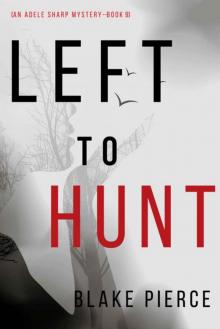 Left to Hunt (An Adele Sharp Mystery—Book Nine)
Left to Hunt (An Adele Sharp Mystery—Book Nine)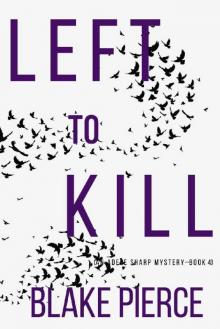 Left to Kill (An Adele Sharp Mystery—Book Four)
Left to Kill (An Adele Sharp Mystery—Book Four)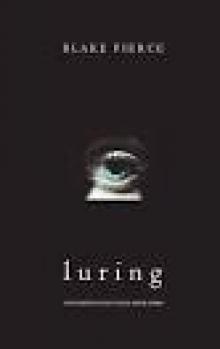 LURING
LURING If She Hid
If She Hid If She Fled
If She Fled Already Gone (A Laura Frost FBI Suspense Thriller—Book 1)
Already Gone (A Laura Frost FBI Suspense Thriller—Book 1) Vengeance in Vienna
Vengeance in Vienna Once Shunned
Once Shunned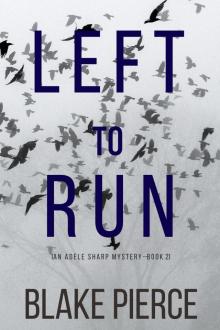 Left To Run
Left To Run Face of Fury (A Zoe Prime Mystery--Book 5)
Face of Fury (A Zoe Prime Mystery--Book 5) Blake Pierce - Kate Wise - 5 - If She Fled
Blake Pierce - Kate Wise - 5 - If She Fled IF SHE RAN
IF SHE RAN Left to Envy (An Adele Sharp Mystery—Book Six)
Left to Envy (An Adele Sharp Mystery—Book Six) Silent Neighbor
Silent Neighbor Her Last Wish (A Rachel Gift FBI Suspense Thriller—Book 1)
Her Last Wish (A Rachel Gift FBI Suspense Thriller—Book 1) Almost Lost
Almost Lost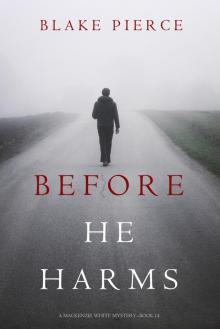 Before He Harms
Before He Harms Murder (and Baklava) (A European Voyage Cozy Mystery—Book 1)
Murder (and Baklava) (A European Voyage Cozy Mystery—Book 1) Left to Vanish (An Adele Sharp Mystery—Book Eight)
Left to Vanish (An Adele Sharp Mystery—Book Eight)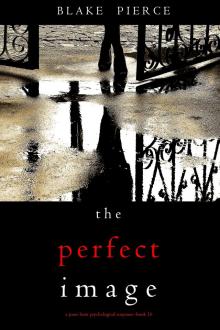 THE PERFECT IMAGE
THE PERFECT IMAGE The Perfect Affair (A Jessie Hunt Psychological Suspense Thriller—Book Seven)
The Perfect Affair (A Jessie Hunt Psychological Suspense Thriller—Book Seven)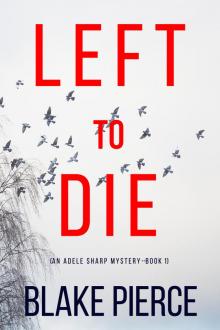 Left To Die
Left To Die BEFORE HE LAPSES
BEFORE HE LAPSES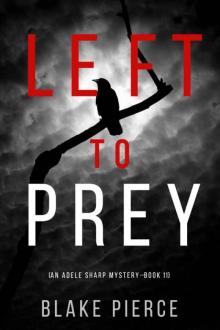 Left to Prey (An Adele Sharp Mystery—Book Eleven)
Left to Prey (An Adele Sharp Mystery—Book Eleven) The Perfect Neighbor (A Jessie Hunt Psychological Suspense Thriller—Book Nine)
The Perfect Neighbor (A Jessie Hunt Psychological Suspense Thriller—Book Nine)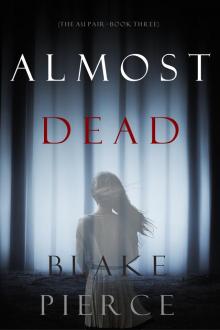 Almost Dead
Almost Dead The Perfect Wife
The Perfect Wife The Perfect Smile
The Perfect Smile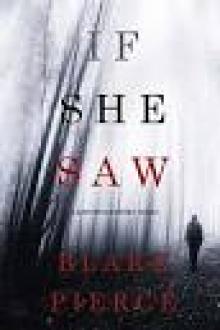 If She Saw
If She Saw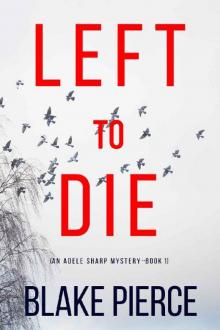 Left To Die (An Adele Sharp Mystery—Book One)
Left To Die (An Adele Sharp Mystery—Book One) City of Prey: An Ava Gold Mystery (Book 1)
City of Prey: An Ava Gold Mystery (Book 1) Stalking
Stalking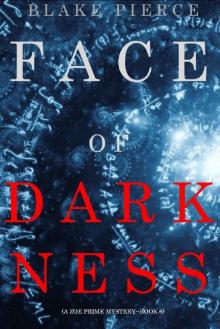 Face of Darkness (A Zoe Prime Mystery—Book 6)
Face of Darkness (A Zoe Prime Mystery—Book 6) The Perfect Mistress (A Jessie Hunt Psychological Suspense Thriller—Book Fifteen)
The Perfect Mistress (A Jessie Hunt Psychological Suspense Thriller—Book Fifteen) Girl, Vanished (An Ella Dark FBI Suspense Thriller—Book 5)
Girl, Vanished (An Ella Dark FBI Suspense Thriller—Book 5) The Perfect Block
The Perfect Block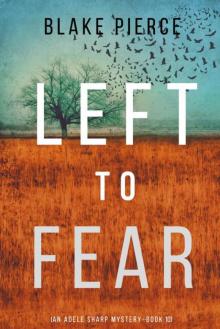 Left to Fear (An Adele Sharp Mystery—Book Ten)
Left to Fear (An Adele Sharp Mystery—Book Ten) Almost Gone (The Au Pair—Book One)
Almost Gone (The Au Pair—Book One) The Perfect Facade (A Jessie Hunt Psychological Suspense Thriller—Book Twelve)
The Perfect Facade (A Jessie Hunt Psychological Suspense Thriller—Book Twelve) The Perfect Affair
The Perfect Affair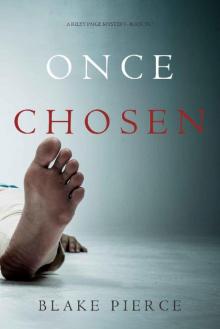 Once Chosen (A Riley Paige Mystery—Book 17)
Once Chosen (A Riley Paige Mystery—Book 17) Girl, Alone (An Ella Dark FBI Suspense Thriller—Book 1)
Girl, Alone (An Ella Dark FBI Suspense Thriller—Book 1)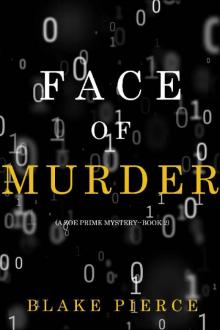 Face of Murder (A Zoe Prime Mystery—Book 2)
Face of Murder (A Zoe Prime Mystery—Book 2) The Perfect Mistress
The Perfect Mistress Crime (and Lager) (A European Voyage Cozy Mystery—Book 3)
Crime (and Lager) (A European Voyage Cozy Mystery—Book 3) Before He Harms (A Mackenzie White Mystery—Book 14)
Before He Harms (A Mackenzie White Mystery—Book 14)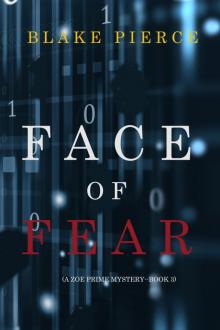 Face of Fear
Face of Fear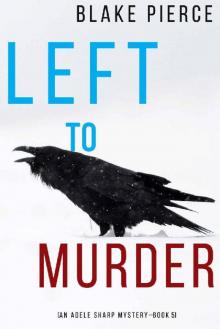 Left to Murder (An Adele Sharp Mystery—Book Five)
Left to Murder (An Adele Sharp Mystery—Book Five) Left to Vanish
Left to Vanish The Perfect Secret (A Jessie Hunt Psychological Suspense Thriller—Book Eleven)
The Perfect Secret (A Jessie Hunt Psychological Suspense Thriller—Book Eleven) The Perfect Deceit (A Jessie Hunt Psychological Suspense Thriller—Book Fourteen)
The Perfect Deceit (A Jessie Hunt Psychological Suspense Thriller—Book Fourteen)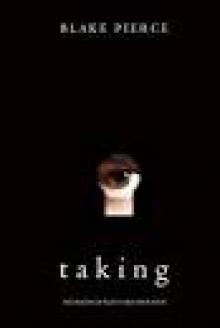 Blake Pierce - The Making of Riley Paige - 4 - Taking
Blake Pierce - The Making of Riley Paige - 4 - Taking Death (and Apple Strudel) (A European Voyage Cozy Mystery—Book 2)
Death (and Apple Strudel) (A European Voyage Cozy Mystery—Book 2) THE PERFECT HOUSE
THE PERFECT HOUSE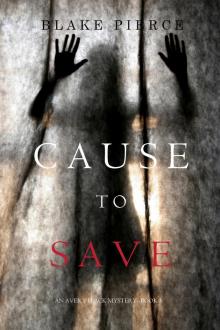 Cause to Save
Cause to Save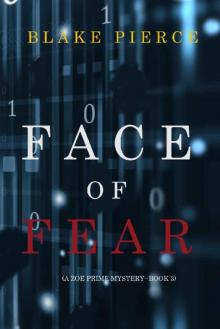 Face of Fear (A Zoe Prime Mystery—Book 3)
Face of Fear (A Zoe Prime Mystery—Book 3)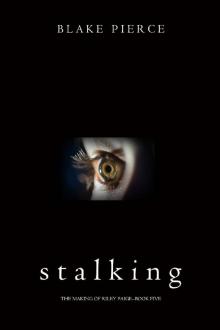 Stalking (The Making of Riley Paige—Book 5)
Stalking (The Making of Riley Paige—Book 5)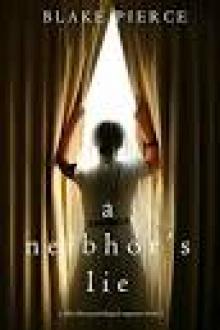 A Neighbor's Lie
A Neighbor's Lie The Perfect Neighbor
The Perfect Neighbor Once Dormant
Once Dormant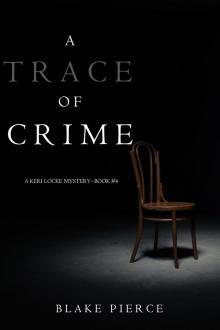 A Trace of Crime
A Trace of Crime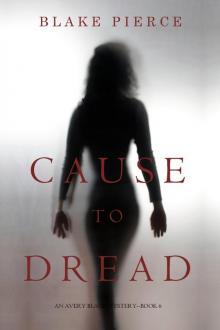 CAUSE TO DREAD
CAUSE TO DREAD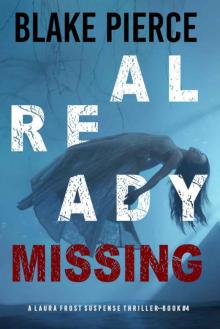 Already Missing (A Laura Frost FBI Suspense Thriller—Book 4)
Already Missing (A Laura Frost FBI Suspense Thriller—Book 4)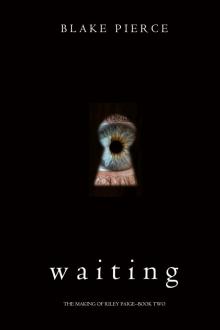 Waiting
Waiting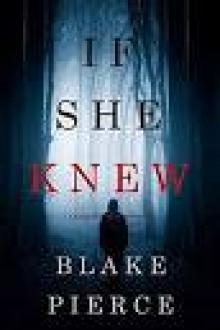 If She Knew
If She Knew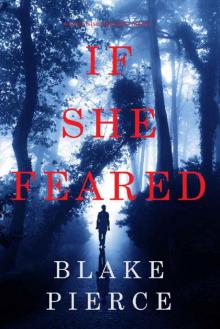 If She Feared (A Kate Wise Mystery—Book 6)
If She Feared (A Kate Wise Mystery—Book 6)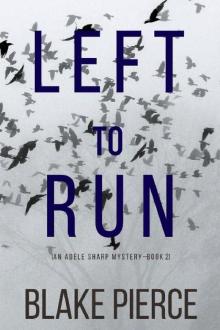 Left To Run (An Adele Sharp Mystery—Book Two)
Left To Run (An Adele Sharp Mystery—Book Two) Left to Lapse (An Adele Sharp Mystery—Book Seven)
Left to Lapse (An Adele Sharp Mystery—Book Seven) If She Hid (A Kate Wise Mystery—Book 4)
If She Hid (A Kate Wise Mystery—Book 4) The Perfect Alibi (A Jessie Hunt Psychological Suspense Thriller—Book Eight)
The Perfect Alibi (A Jessie Hunt Psychological Suspense Thriller—Book Eight)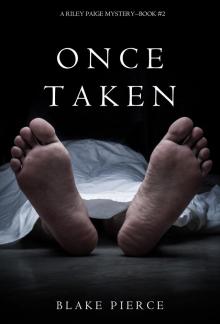 Once Taken
Once Taken Before He Envies
Before He Envies Before He Sins
Before He Sins Mackenzie White 07-Before He Sins
Mackenzie White 07-Before He Sins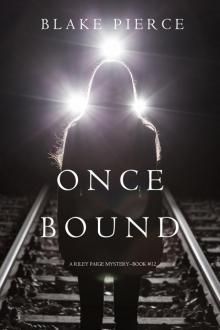 ONCE BOUND
ONCE BOUND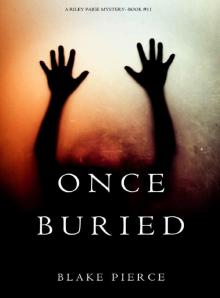 Once Buried
Once Buried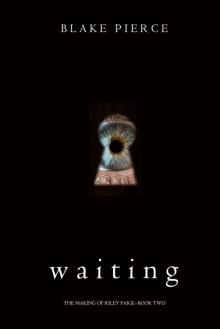 Waiting (The Making of Riley Paige—Book 2)
Waiting (The Making of Riley Paige—Book 2)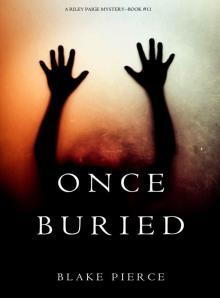 Riley Paige 11-Once Buried
Riley Paige 11-Once Buried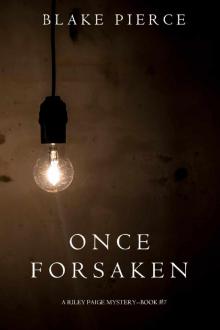 Once Forsaken (A Riley Paige Mystery—Book 7)
Once Forsaken (A Riley Paige Mystery—Book 7)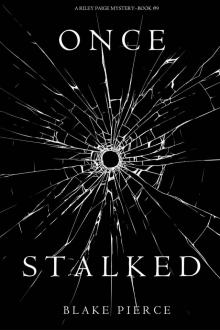 Once Stalked (A Riley Paige Mystery—Book 9)
Once Stalked (A Riley Paige Mystery—Book 9) The Perfect Disguise (A Jessie Hunt Psychological Suspense Thriller—Book Ten)
The Perfect Disguise (A Jessie Hunt Psychological Suspense Thriller—Book Ten)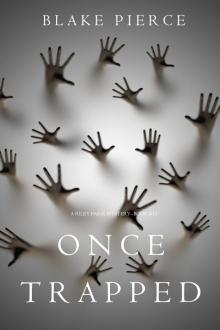 ONCE TRAPPED
ONCE TRAPPED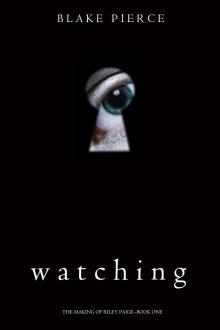 Watching
Watching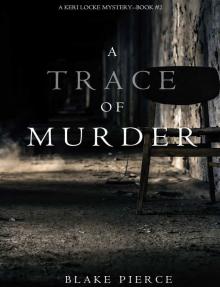 Keri Locke 02-A Trace of Muder
Keri Locke 02-A Trace of Muder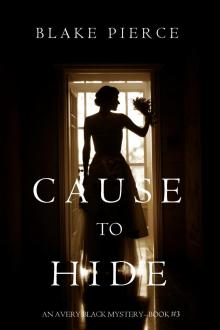 Cause to Hide
Cause to Hide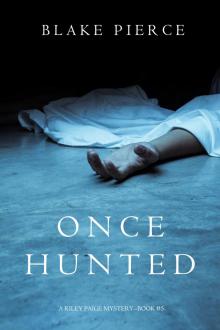 Once Hunted
Once Hunted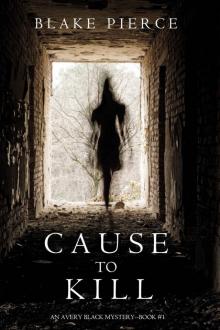 Cause to Kill (An Avery Black Mystery—Book 1)
Cause to Kill (An Avery Black Mystery—Book 1)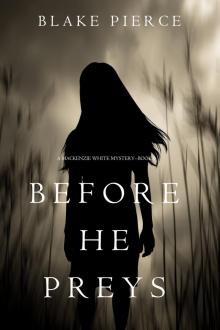 Before He Preys
Before He Preys Once Pined
Once Pined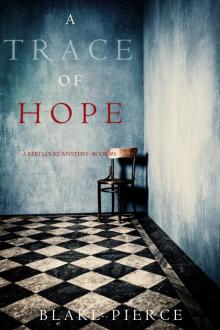 A Trace of Hope
A Trace of Hope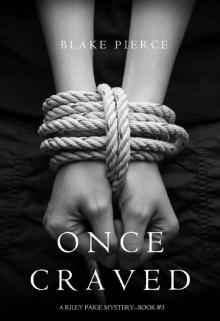 Once Craved (a Riley Paige Mystery--Book #3)
Once Craved (a Riley Paige Mystery--Book #3)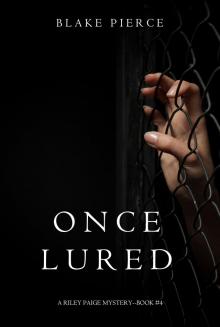 Once Lured
Once Lured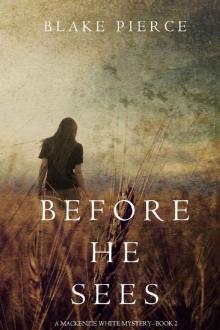 Before He Sees (A Mackenzie White Mystery—Book 2)
Before He Sees (A Mackenzie White Mystery—Book 2) Before he Kills (A Mackenzie White Mystery—Book 1)
Before he Kills (A Mackenzie White Mystery—Book 1)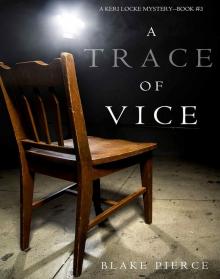 Keri Locke 03-A Trace of Vice
Keri Locke 03-A Trace of Vice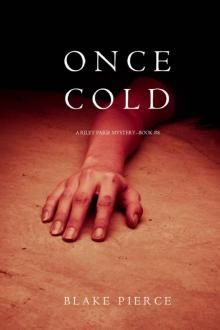 Once Cold
Once Cold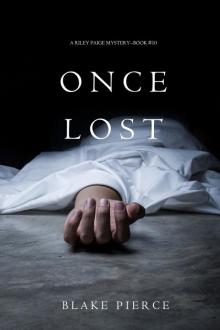 ONCE LOST
ONCE LOST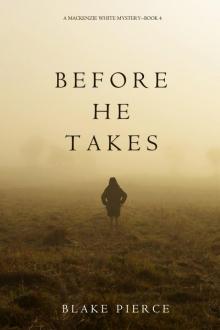 Before He Takes
Before He Takes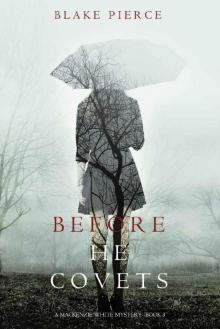 Before He Covets (A Mackenzie White Mystery—Book 3)
Before He Covets (A Mackenzie White Mystery—Book 3) BEFORE HE NEEDS
BEFORE HE NEEDS